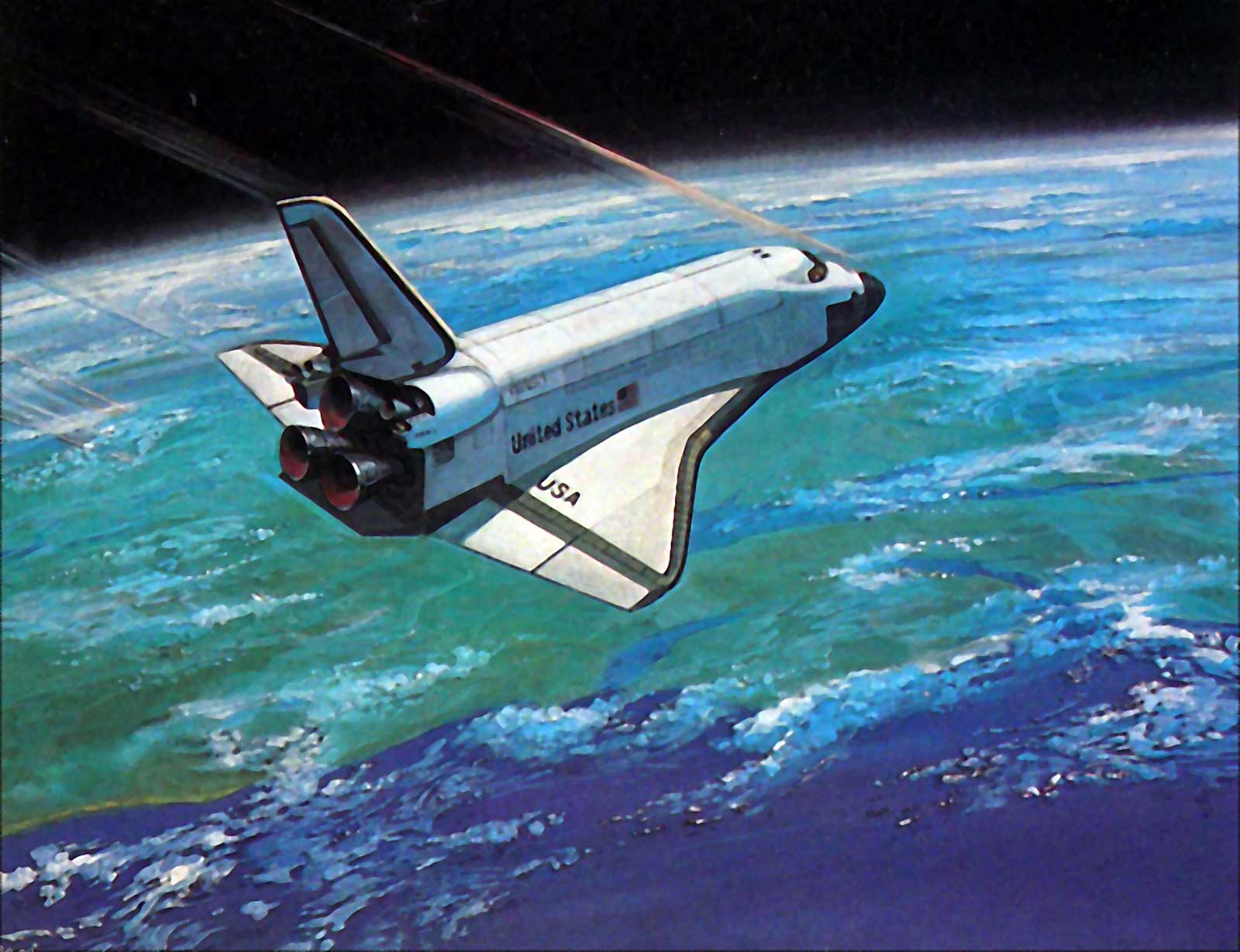FOREWORD
A New Era in Space

On December 17, 1903, Orville and Wilbur Wright successfully achieved sustained flight in a power-driven aircraft, The first flight that day lasted only 12 seconds over a distance of 37 meters (120 feet), which is about the length of the Space Shuttle Orbiter. The fourth and final flight of the day traveled 260 meters (852 feet) in 59 seconds. The initial notification of this event to the world was a telegram to the Wrights’ father.
Sixty-six years later, a man first stepped on the lunar surface and an estimated 500 million people throughout the world saw the event on television or listened to it on radio as it happened.
Historic events ARE spectacular. The space program, however, has always been much more than a television spectacular. Today, space transportation is working in many ways for us all, and we have come to expect this.
A whole new era of transportation will come into being in the 1980’s with the advent of the Space Shuttle and its ability to inexpensively transport a variety of payloads to orbit. It is designed to reduce the cost and increase the effectiveness of using space for commercial, scientific, and defense needs.
With its versatility and reusability, the Space Shuttle will truly open the door to the economical and routine use of space. As a transportation system to Earth orbit, it will offer the workhorse capabilities of such earthbound carriers as trucks, ships, and airlines and will be as vital to the nation’s future in space as the more conventional carriers of today are to the country’s economic life and well-being.
So often have the man-machine relationships in space been proven to be highly effective that the Space Shuttle is being designed and built to take advantage of the most efficient characteristics of both humans and complex machines. This combination, coupled with the flexible characteristics of Shuttle, will provide an efficient system for our future national space program activities. The Shuttle will truly provide our nation with routine space operations in near-Earth orbit that can contribute substantially to improving the way of life for all the peoples of our world.
The Space Shuttle era will begin approximately 20 years after the first U.S. venture into space, the launching of Explorer 1 on January 31, 1958. Since that date, unmanned satellites have probed the near and distant reaches of space Manned systems have been used to explore the lunar surface and expand the present knowledge of the Earth, the Sun, and the adaptability of man to extended space flight in near-Earth orbit. To serve the future needs of space science and applications, the technological and operational experience underlying these accomplishments is being applied to the development of the Space Shuttle. This vehicle is the basic element in a space transportation system that will open a new era of routine operations in space.
The primary design and operations goal for the Space Shuttle Program is to provide routine access to space Spacelabs will be carried aloft by the Shuttle in support of manned orbital operations free-flying or automated satellites will be deployed and recovered from many types of orbits Automated satellites with propulsive stages attached will be deployed from the Space Shuttle and placed in high-energy trajectories. This approach to space operations will provide many avenues for conducting investigations in space Many participants, representing diverse backgrounds and capabilities, will work routinely in these space operations of the future.